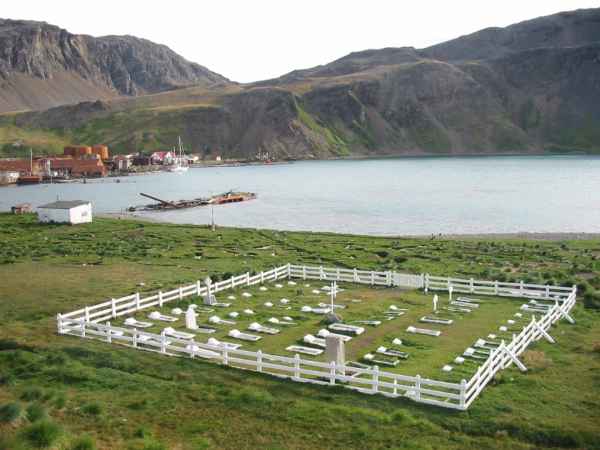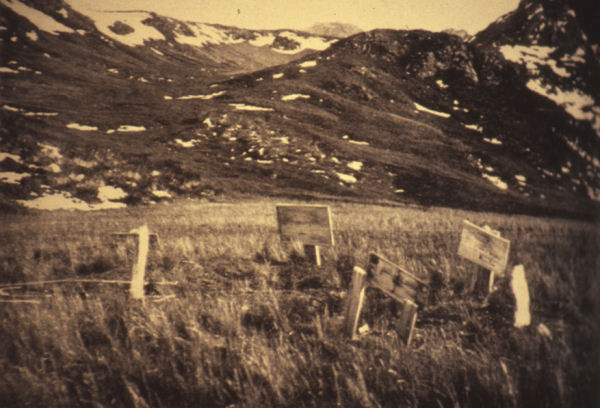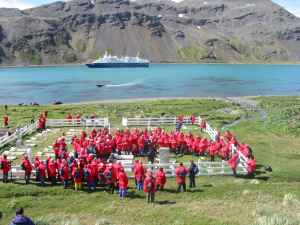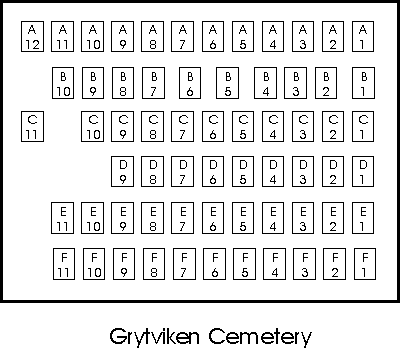
The Grytviken cemetery lies near to the abandoned whaling station in King Edward Cove.
The earliest description of the cemetery was by Otto Nordenskjold's 'Antarctica' expedition in May 1902. They anchored in 'May Cove' (now Maiviken) on 01 May 1902, and walked to 'Boiler Bay' (Now Grytviken) where they found:
.. a number of whalers' graves at the south side of the bay. It was a pretty little place - a smooth bit of turf close to a rippling brook, which fell, a fleecy white force, down the side of the mountain. A few pieces of wood thrust into the earth mark the graves, and on three of them are inscriptions which are still legible.
Expedition member Gosta Bödman took this photograph (courtesy Freg Goldberg collection):

Expedition member J G Andersson also photographed the graves and the picture is in Nordenskjold's book 'Antarctica'
The station operated from 1904 to 1964 and was the first shore-based whaling station operating in South Georgia.
64 people are buried here, including early sealers from the days before the station operated, Sir Ernest Shackleton, and Felix Artuso, a Submariner who died during the brief Argentine armed occupation in 1982. Nine graves are from the winter of 1912, when a typhoid epidemic hit the station.
Many visitors come to South Georgia each year - over forty cruise ship visits bring over three thousand visitors in the summer as well as scientists on research ships, military visitors and yachts. Most come to see Sir Ernest Shackleton's grave in particular so the cemetery is popular. To prevent trampling of the other graves, visiting groups are asked to limit the number of people inside the cemetary at any time to 100.


| Click a Grave Ref for details | |||||||||||
|---|---|---|---|---|---|---|---|---|---|---|---|
| A12 | A11 | A10 | A9 | A8 | A7 | A6 | A5 | A4 | A3 | A2 | A1 |
| B10 | B9 | B8 | B7 | B6 | B5 | B4 | B3 | B2 | B1 | ||
| C11 | C10 | C9 | C8 | C7 | C6 | C5 | C4 | C3 | C2 | C1 | |
| D9 | D8 | D7 | D6 | D5 | D4 | D3 | D2 | D1 | |||
| E11 | E10 | E9 | E8 | E7 | E6 | E5 | E4 | E3 | E2 | E1 | |
| F11 | F10 | F9 | F8 | F7 | F6 | F5 | F4 | F3 | F2 | F1 | |